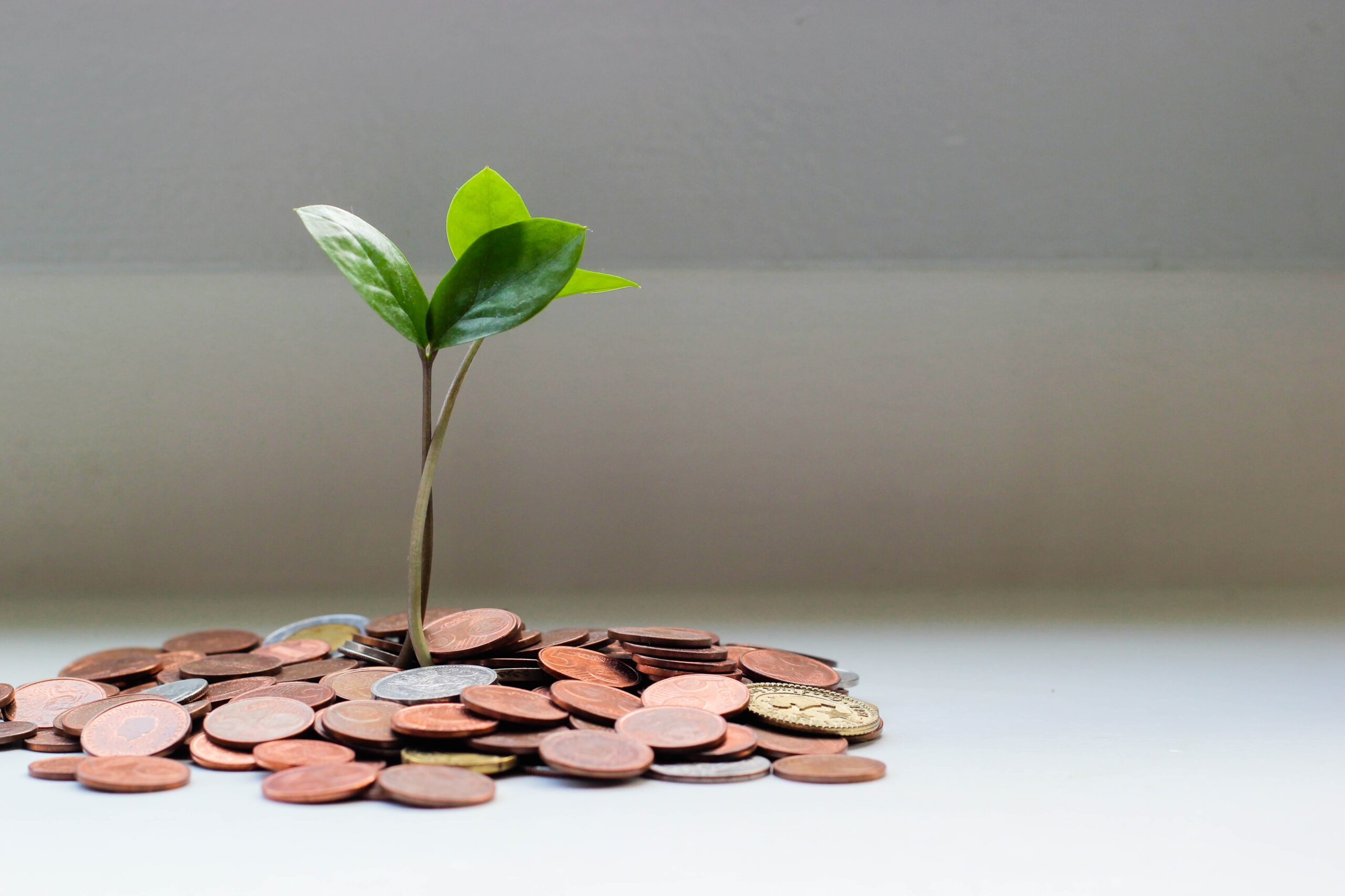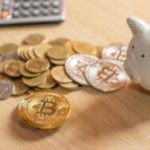
[Chapter 6 of Per Bylund’s new book How to Think about the Economy: A Primer.]
So far, our discussion about the economy has been exclusively from the perspective of value. Value is the ultimate goal of our actions and what motivates our behavior. It is personal—subjective—which means it comes from satisfying a want. If we are hungry, we consume food; if we feel lonely, we might visit a friend.
Value is the removal of or fulfillment of some uneasiness (hunger or loneliness), which makes us better off. We can compare satisfactions, for example, that we like oranges more than apples and we like pears more than either. Simple value comparisons in terms of our own personal satisfactions are unproblematic. If we are both hungry and thirsty, we can quickly decide which uneasinesses to remove first by considering how urgently we feel each one. But although we can make comparisons and determine which satisfaction would be greater, there are no units of value.
The Problem of Measuring Value
We cannot measure the extent to which we removed uneasiness by taking a certain action. The satisfaction this brings is a feeling we experience, which has no units or exact measures. We cannot say that we like oranges 2.5 times more than apples and pears 1.3 times more than oranges.
We cannot compare the subjective values of different people, as their experienced satisfactions are personal. It is nonsense to say that Adam likes pears 20 percent more than Beth likes pears. Perhaps Adam exclaims that he likes pears “a lot,” whereas Beth doesn’t care for them at all. If that is how they truly feel, then Beth might offer to give Adam her pear. But this is still not a measure of how much they each value pears, nor is it a comparison using some universal unit of satisfaction. Beth values giving Adam the pear, perhaps her feelings for Adam are strong and she knows he likes pears. But it doesn’t tell us anything about how much Beth—or Adam—values keeping or giving away the pear.
The lack of measure makes value problematic in a social setting—especially in advanced economies with long, specialized production processes (which we will discuss in chapter 7). How do we economize on scarce resources so that we get as much value as possible?
To illustrate, imagine a small society of 150 people where there is enough water to quench the thirst of forty-five individuals and food to satisfy thirty of them. How do you determine which forty-five are “most thirsty” and which thirty are “most hungry”?1
This society could decide to use the water and food to invest in production, which could allow them to create even more value. If ten people are provided enough water and food to last them three days, then they can go get more water and food and bring it back to the others. Should this society make this investment? Should they send one party of ten or two parties of five out in different directions to search? Whom should they choose to collect the newly obtained water and food? Who among the remaining population should get whatever water and food remains? Such comparisons require some measure of value, but because value is a personal experience, there isn’t one. There is no solution to this economization problem.
Markets solve this conundrum by using money and prices, which provide objective social relative valuations (more on this below) and therefore allow for comparisons and economizing in terms of valued goods. If pears cost us 1.3 times as much as oranges, we can easily decide how to use our purchasing power to get as much satisfaction as possible: buy pears, buy oranges, or buy some combination of both. We can make such comparisons individually as well as collaboratively. As we will see, money and prices are indispensable for an economy. We cannot function without them.
The Use of Money
We tend to take both money and prices for granted. They are so universally present that most think of money as a measure of value. They even think of value itself in terms of money. This is a mistake.
Money is the commonly used medium of exchange, and it has value to us because it provides this function. We value money like other goods, because of what it can do for us. But it is not the bills and coins themselves that provide us with value, but the expectation that we can use them to buy what we want. This means money works because we recognize it as such and therefore accept it in exchange. Money has purchasing power. It is the belief that money can buy goods that makes it valuable. If we believed that we would not be able to use money to buy goods—perhaps we believe others will not accept it—then we too would not accept it.
This means money is money because people consider it to be money. In this sense, money is a largely self-reinforcing social institution. We all have experience using it and thus have some idea of what it means for something to be money. But this does not explain what money is, why it is, or how it came to be.
Consider what would make you accept something as money. Or, to get to the real issue: what would make a society that does not use money accept something as money. Because money’s value is that others will accept it in exchange, nothing that aspires to be money will have value as money to begin with. Only after a thing has been broadly adopted in exchange will something be recognized as money—but not before.
This leads many to assert that money must have been imposed from the top down by decree to use it in exchanges. The idea is that some head of state invented the concept of money and introduced it to facilitate trade (or, perhaps, payment of taxes). But this “explanation” misses the point: unless something is already a money, people will not voluntarily accept it in exchange. So it has no or little value before it is deemed money.
A decree does not create a money—it creates only an obligation, which is limited by the extent of its enforcement. However, it is fully conceivable that a government can, bit by bit, take over and monopolize an already existing money, which we have seen happen. Most currencies today are government monopoly monies, but that is not how money was invented or accepted as a medium of exchange—it is only how it ended up. The economic function of money cannot simply be created from the top down.
People choose to exchange goods for their own benefit, which means voluntary exchange must be for the parties’ mutual benefit. Both expect to become better off or they wouldn’t choose to exchange. An obligation to accept something that is not directly valuable to them—such as an imposed currency not yet accepted as money—would lessen people’s willingness to trade. After all, if you were compelled to accept rocks in “payment” for your belongings, then you probably would refrain from offering them up for sale. Even if I offered you a ton of rocks, you would not exchange them for your house or car. Why trade a valued good for something you don’t want? So even if you were required to pay your taxes using rocks, you would limit your trade for rocks to fulfill that duty—but not more. The market for exchanging goods for rocks would be very limited.
Such exchanges would happen by choice only if the payment offered were actual money. In a society where there is no money, people not only lack trust in the money’s purchasing power—they have no understanding of the concept itself. Imagine offering a stack of dollar bills or a gold coin to a person from the Stone Age in exchange for their axe or food.
The Emergence of Money
Money is an economic concept. Dollar bills aren’t money in themselves, but money can exist in the form of dollar bills. However, those bills are money only because and for as long as they are accepted as such. This becomes obvious when we travel to other countries because what is money in one country may not be accepted as money in another. You cannot use Swedish kronor for payment in Austria or the United States, even though everyone in Sweden accepts them as money.
We know very little about the historical origins of money, but the concept is clear. The economist Carl Menger showed how a barter economy can transition into a money economy.2 Menger’s explanation requires no central planner or decree—money emerges. This is important because it provides insight into the meaning and role of money as an economic concept.
In a barter economy, people trade goods for goods. This economy suffers from obvious limitations, because each exchange requires that both parties get something they want in a quantity they want, without using anything we call money. In other words, someone who offers eggs for sale and wishes to buy butter needs to find someone who is selling butter and wants eggs in exchange. This greatly limits the number of potential trading partners.
Because goods differ in durability and size, barter economies could not develop into productive economies with division of labor. Consider a boat builder who wants to sell his newly designed speedboat. Even if he would want eggs, he would hardly accept thousands of eggs in exchange—they would go bad and be useless in a short period of time. So he would need to find someone offering the exact bundle of goods that he wants and is willing to sell for the boat. The parties also need to agree on the rates: How many eggs for the boat?
People exchange goods to become better off, that is they trade for value. Menger noted that people will seek any number of ways to get around the limitations of barter. If the dairy farmer is not willing to accept my eggs for butter but I know he will accept bread, then I can approach the baker to exchange eggs for bread—and if the baker agrees, I can then exchange the bread for butter. In other words, I exchange eggs for bread not because I want bread but because I want to use the bread to obtain butter. My first exchange facilitates the second, from which I benefit directly.
If I wanted berries, for example, I would have to go through the same procedure if the person offering berries does not want my eggs but would accept something else. I would sell my eggs for that something else in order to exchange it for berries. Even though the eggs work in some cases, they won’t work in all. But let’s say some of them accept the same different good in exchange for bread. Knowing this, I could exchange my eggs for bread simply because I believe the bread will be more useful when I go on my next grocery run. In Menger’s terms, I sell my eggs to acquire a more saleable good, for the sole purpose of using it in exchange; to me it serves only the indirect purpose of facilitating the actual exchanges. Thus, it makes sense for me to acquire bread even if I don’t fancy it—and even if I am allergic to it.
As people exchange their products for more saleable goods, the more saleable goods become more sought after because they can be used to buy many goods. And as more people realize how useful these goods are as facilitators of exchange, more people sell their own goods (I my eggs, the dairy farmer her butter, etc.) for those more saleable goods. Eventually, by people’s actions but not by their design, one or a few goods emerge as commonly used media of exchange—monies. They are valued primarily as media of exchange, not for being goods in themselves.
The Importance of Money
In a money economy, we use money to pay for goods and can easily compare prices because they are all expressed in the same unit—a currency. But, as we’ve seen in previous chapters, prices are really exchange ratios. Money serves as an intermediary that facilitates trade that elevates us above the limitations of barter trade.
The existence of money uncouples people’s buying and selling in terms of goods. It makes universal purchasing power of the exchange value of goods. In other words, I can sell my goods or services to one person but use the purchasing power gained in return (as money) to buy goods or services from someone else. This seems obvious because we are used to it. However, the implications are enormous.
Under barter trade, employment would be possible only where an employer can offer the specific goods an employee will accept as payment. Imagine that your employers paid for labor not in money but instead in specific items: clothing, hygiene products, books, travel, furniture, etc. It is easy to see that finding an employer who offers the most desirable bundle of goods would be almost impossible. It would likely mean that you would need to accept a bundle that is far from perfect to gain employment. You could do much better if you received the exchange value of those goods instead—the purchasing power (money)—and used it to buy the goods you prefer.
Money is therefore much more than a convenience—it is necessary for exchanges to take place and for the advanced, specialized production processes we take for granted in the modern economy. Large-scale production, supply chains, and specialization are made possible because money uncouples our efforts as both buyers and sellers. Due to the uncoupling, we can also specialize in what we do well rather than produce only what we ourselves want to consume. Consequently, we can focus our production efforts on where we make the biggest difference—where we create most value for society. Without money, we would not be nearly as productive.
The uncoupling also means we can use our acquired purchasing power—what we are paid for producing—on what we find most valuable. Money makes it possible for us to pursue wants that would never be within reach with barter. The consequence of having and using money means not only greatly improved production but also that we can pursue more valuable consumption. The former facilitates and increases the opportunities for the latter. And the more value we produce, the more purchasing power we are paid in return.
Because all actors in a money economy can pursue those goods they value most—and can produce those goods that others highly value—there is more value overall. We are much better off in a money economy than in a barter economy.
Money Prices
Money makes prices easy to compare. Rather than expressing prices as ratios—where each good is “priced” in terms of all other goods—they are expressed in money.
In a barter economy, my buying bread with eggs in order to buy butter requires that the three parties establish exchange ratios. I might be able to exchange a dozen eggs for three slices of bread from the baker. In this transaction, the price of one slice of bread is four eggs and the price of one egg is a quarter slice of bread. I can then use the bread to purchase a pound of butter for two slices of bread, making the bread price of butter two slices per pound and the butter price of bread half a pound per slice.
I am party to both transactions and can infer that the “price” of one pound of butter is eight eggs. That is a simplification, because the dairy farmer does not accept eggs in exchange. The problem is that the prices of all goods here are expressed as ratios of all other goods. If, for example, the dairy farmer would also accept eight cups of berries for a pound of butter, then the price of one pound of butter would be either two slices of bread or eight cups of berries. Such ratios (prices in kind) could be established for all combinations of goods in any possible exchange. But how can we compare them? Without a common denominator, these prices are all unique exchange ratios that is difficult to keep straight or make sense of.
Let us assume that bread emerges as money in the example above. This means that bread, serving as the medium of exchange, becomes one side of virtually every transaction. In other words, the prices of all goods can be expressed in terms of bread—because they are traded for bread. So, I would sell my eggs for bread and use bread to buy butter and berries. As bread is the common denominator, I can easily compare prices and buy the good that will best satisfy my wants. Now, because bread is money, all sellers of goods are likely to accept it as payment because they want the purchasing power, not the bread itself.
If a pound of butter costs two slices of bread and a slice of bread buys two cups of berries, then it is easy for me to compare prices. The three slices of bread that I was paid for my dozen eggs can buy either one-and-a-half pounds of butter, six cups of berries, or some other combination. All I need to do now is determine which option I value more highly. I can easily calculate how to get most value for each slice of bread.
In this money economy, all goods are priced in terms of bread, and bread is priced in terms of all goods. As bread is the medium of exchange, we can say that the purchasing power of (a slice of) bread is half a pound of butter, two cups of berries, four eggs, etc. Consequently, it is much easier for everyone in society to determine whether something is “worth it.”
Another way to say this is that the opportunity cost of buying two cups of berries for a slice of bread is the value of whatever else one can buy for that slice of bread: half a pound of butter, four eggs, and so on. Obviously, we would choose to buy whatever available good we expect will provide us with the greatest satisfaction. As everybody strives for value—and, thanks to money, can properly compare prices—our actions produce implicit bidding for the goods that have been produced. Our willingness and ability to buy a good at a certain price constitutes our demand.
The highest bidder for a good will receive it first and will not have to do without. Those who bid less money for the good will be served later until the sellers no longer think the bread offered is worth it. The more people value a good, the higher its market price. And the more of the good is for sale, the lower its market price.
Similarly, because our buying and selling efforts are uncoupled, we can produce what will get us the most money in return. We now can expend our labor where we have greater skill and expertise and where we can get the highest payment in money. What this means is that to benefit ourselves (higher payment), we choose to contribute to the economy in the way that consumers value most highly. In a market setting, the purchasing power that we are offered in return for our services tend to be proportionate to the value we contribute to the market in money prices.
As a result, the free market provides those who contribute most value in production with the most purchasing power, which means they in turn also have a greater ability to satisfy their own wants by buying their preferred goods and services. Purchasing power—and therefore consumption power—the extent to which people are able to satisfy their wants through goods—is consequently a reflection of one’s contribution to the economy (as a producer). Simply put, what we supply constitutes our ability to demand.
Fiat Currency and Price Inflation
The discussion above explained the economic concept of money as commodity money. Historically speaking, different things were money in different societies: rocks, seashells, cattle, etc. In Europe and beyond, gold and silver emerged as universal, international money.
The paper money we use today is an evolution of precious metal coins and banking. The process is as follows. Banks sell space in their vaults for safe-keeping of people’s money. Money is fungible, meaning it does not matter if you get the same gold or silver coin back from the bank, so banks can keep all customers’ coins in the same vault and issue receipts for the number of coins each customer has on deposit. As those receipts are redeemable in coins, people can use them in exchange directly instead of having to take them to the bank first. Those who end up with a receipt can deposit it with their own bank, which in turn makes a claim on the bank that issued the receipt. At regular intervals, the banks clear all their claims by transporting the net gold and silver owed, saving everybody a lot of trouble.
This practice has a downside: it offers banks an incentive to issue more receipts than there is money in their vault. As receipts are not all redeemed at the same time and money is fungible, this practice can provide banks with unearned purchasing power.
In a free-banking system, such abuse would arguably be kept at a lower level. A bank would only be able to issue these additional “cash” receipts as long as the practice is not discovered and the bank is able to maintains its reputation. But as soon as holders of those receipts were not sure if the bank had sufficient money in its vaults—is the bank insolvent—they would act to redeem their receipts. Historically, there are many examples of banks losing their reputations and their customers flocking to withdraw their money, causing a bank run. If the bank has issued more receipts than it can redeem in money, the run bankrupts it.
A bank’s insolvency due to over issue of paper money can also be discovered in banks’ clearing of claims. A clearinghouse establishes the banks’ balances and calculates what money should be transported from one bank to another to balance the accounts. If a bank issues too much paper money, this will be discovered during the clearing of transactions because the other banks have receipts from this bank and demand that it transport real money to them—money that it may not have. So the over issue of paper receipts can be discovered both by customers and by competing banks. The risk of getting caught, which means bankruptcy, is substantial.
In modern times, most monies are national monopoly currencies issued by the government’s central bank and have no backing, as the receipts in our example did. This turn of events is explained partly as government’s attempt to solve the problem of bank runs and partly by its aim to exploit the power of issuing money. As the monopoly issuer of money, the government/central bank can provide itself with purchasing power at no apparent cost.
However, as we saw above, a money’s purchasing power is expressed in the relationship between the money and the goods available. As the new money is used to buy goods on the market, prices are bid up beyond where they otherwise would be because there is more money in circulation. When this happens we see a general, but not uniform, increase in prices when new money enters the market. This is price inflation.
Fiat currency—created by the government’s legal monopolization of money—tends to be inflationary. It is easier for the government to provide itself with purchasing power through the printing press than to tax people. However, the effect is that the purchasing power of money falls, which makes people comparatively poorer and distorts the capital structure (as we saw in chapter 3). This type of money-driven distortion wreaks havoc on the economy, as we will see in the next chapter, and ultimately causes the boom-bust cycle (discussed in chapter 8).
1. To be formally accurate, we should ask who would experience the greatest satisfaction from drinking or eating (removing the uneasiness of thirst and hunger, respectively).
2. Carl Menger, “On the Origin of Money,” trans. Caroline A. Foley, Economic Journal 2, no. 6 (June 1892): 239–55.






